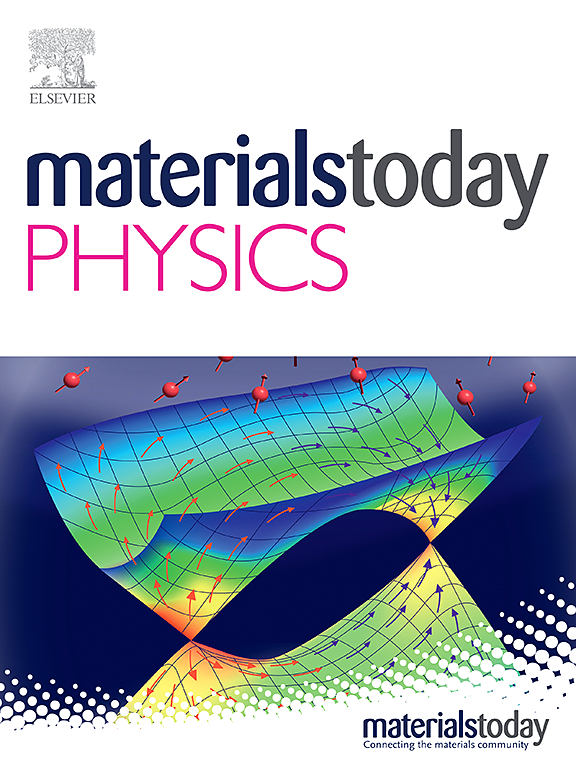Ultrahigh responsivity solar-blind high electron mobility photodetector utilizing a β-Ga2O3/GaN heterojunction
IF 10
2区 材料科学
Q1 MATERIALS SCIENCE, MULTIDISCIPLINARY
引用次数: 0
Abstract
β gallium oxide (β-Ga2O3) is considered as a primary choice for solar-blind ultraviolet (SBUV) detection because of its advantages such as intrinsic solar-blindness and robust stability. Nevertheless, the inherent low electron mobility of β-Ga2O3 poses a significant challenge to its application. Here, β-Ga2O3 films were integrated with gallium nitride (GaN) substrates through metal-organic chemical vapor deposition (MOCVD). Based on the obtained heterojunctions, a solar-blind high electron mobility photodetector (HEMPD) was developed. With the help of the minimal conduction band offset (0.12 eV), the photo-generated carriers are able to almost unhindered move between β-Ga2O3 and GaN, and drift in GaN under an external field. Leveraging the high electron mobility advantage of GaN, the HEMPD achieves a responsivity (R) of 2.96 × 104 A/W and an external quantum efficiency (EQE) of 1.44 × 107 %, even surpassing some β-Ga2O3-based avalanche photodetectors (APDs). Furthermore, the indirect contact between GaN and electrodes significantly improves the SBUV/UV-A rejection ratio of our HEMPD compared to other vertical PDs based on β-Ga2O3/GaN heterojunctions. This study provides crucial insights for overcoming the low electron mobility limit of β-Ga2O3-based PDs.
利用β-Ga2O3/GaN异质结的超高响应度太阳盲高电子迁移率光电探测器
β氧化镓(β- ga2o3)由于其固有的日盲性和鲁棒的稳定性等优点,被认为是太阳盲紫外(SBUV)探测的首选材料。然而,β-Ga2O3固有的低电子迁移率对其应用提出了重大挑战。本文通过金属有机化学气相沉积(MOCVD)将β-Ga2O3薄膜与氮化镓(GaN)衬底集成。基于所获得的异质结,研制了一种日盲高电子迁移率光电探测器(HEMPD)。在最小导带偏移(0.12 eV)的帮助下,光生成的载流子能够在β-Ga2O3和GaN之间几乎不受阻碍地移动,并在外场作用下在GaN中漂移。利用GaN的高电子迁移率优势,HEMPD的响应率(R)达到2.96×104 a /W,外量子效率(EQE)达到1.44×107%,甚至超过了一些基于β- ga2o3的雪崩光电探测器(apd)。此外,与其他基于β-Ga2O3/GaN异质结的垂直PDs相比,GaN和电极之间的间接接触显著提高了HEMPD的SBUV/UV-A抑制比。该研究为克服β- ga2o3基pd的低电子迁移率限制提供了重要的见解。
本文章由计算机程序翻译,如有差异,请以英文原文为准。
求助全文
约1分钟内获得全文
求助全文
来源期刊

Materials Today Physics
Materials Science-General Materials Science
CiteScore
14.00
自引率
7.80%
发文量
284
审稿时长
15 days
期刊介绍:
Materials Today Physics is a multi-disciplinary journal focused on the physics of materials, encompassing both the physical properties and materials synthesis. Operating at the interface of physics and materials science, this journal covers one of the largest and most dynamic fields within physical science. The forefront research in materials physics is driving advancements in new materials, uncovering new physics, and fostering novel applications at an unprecedented pace.
 求助内容:
求助内容: 应助结果提醒方式:
应助结果提醒方式:


